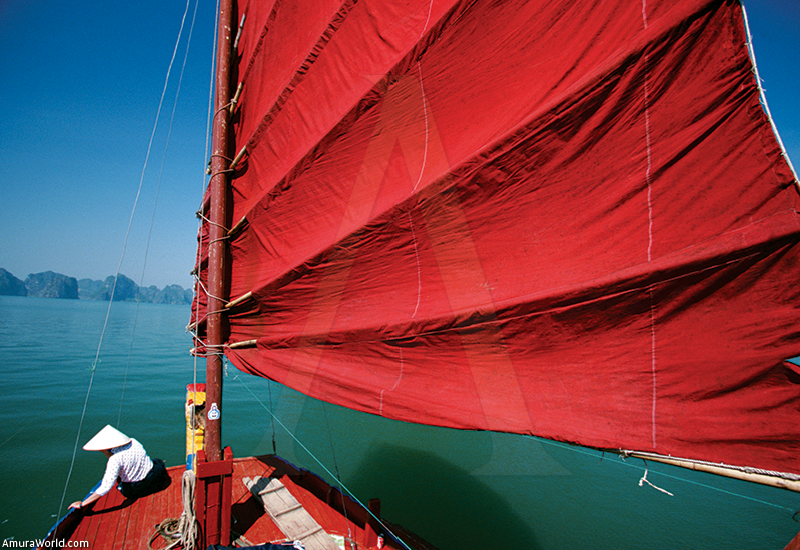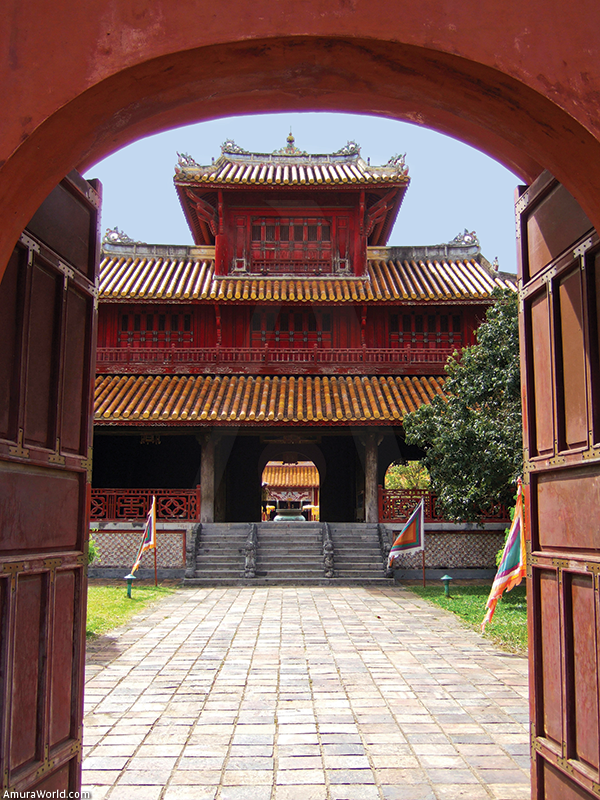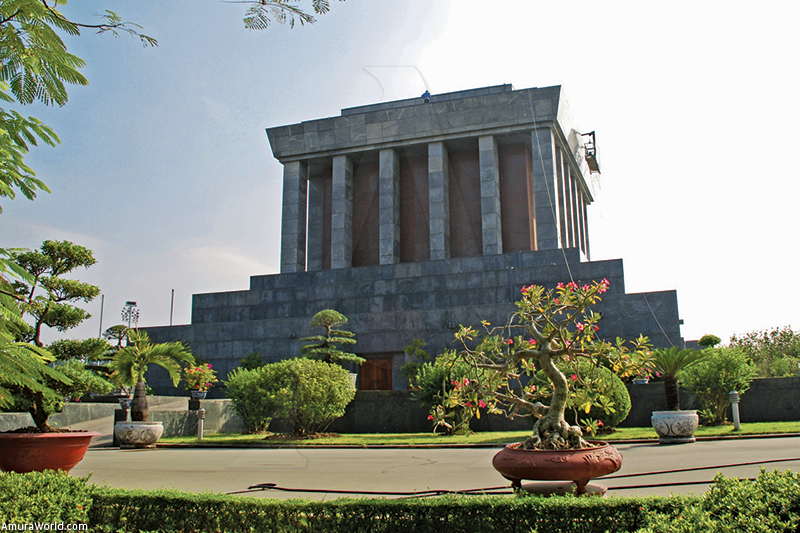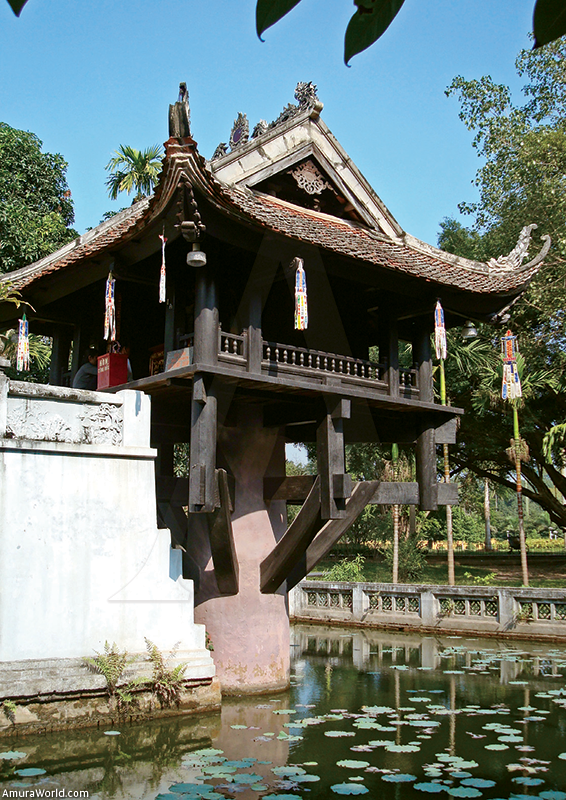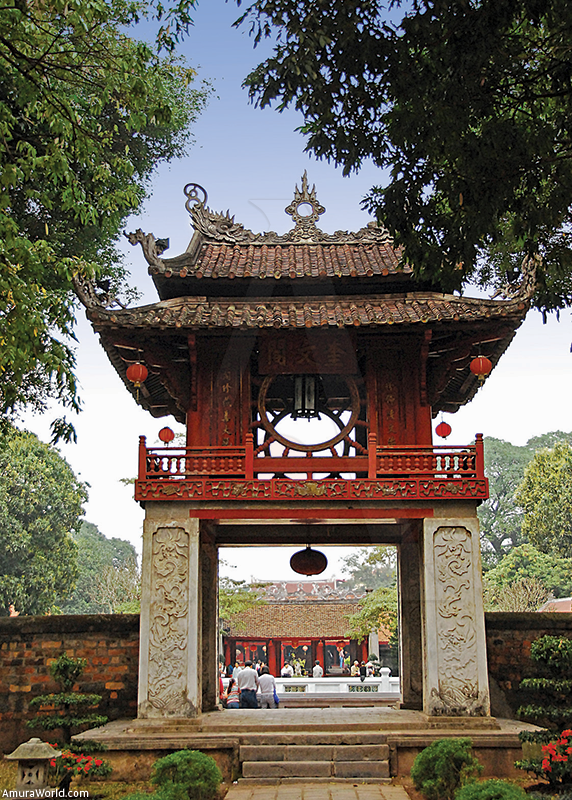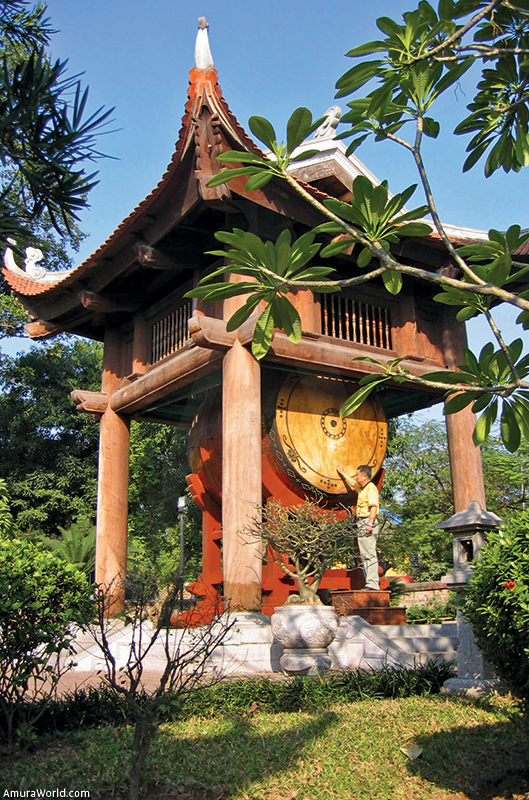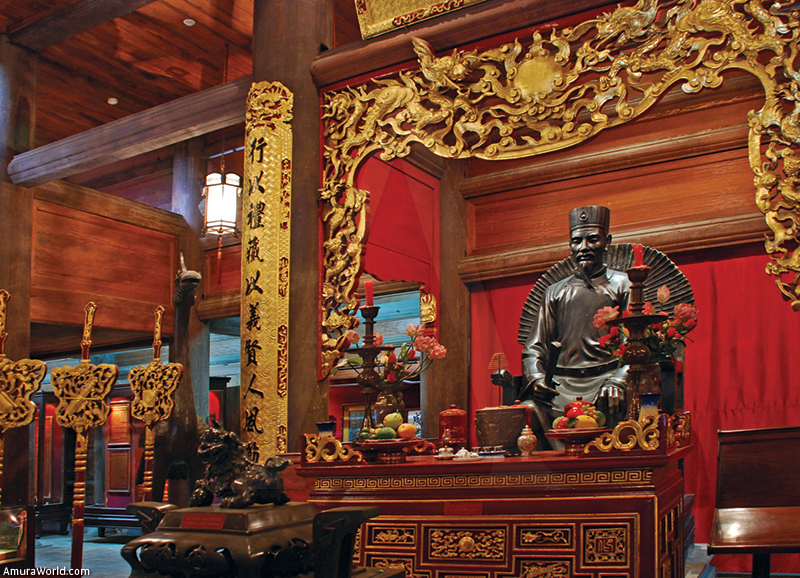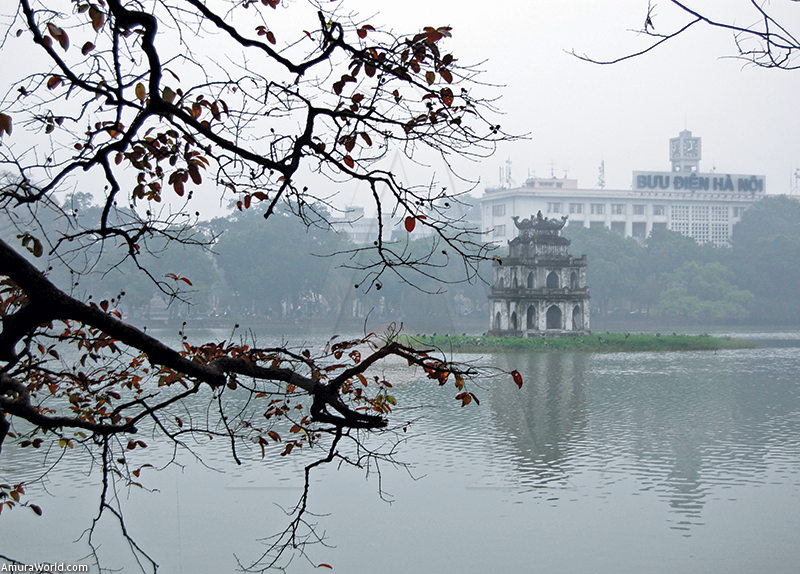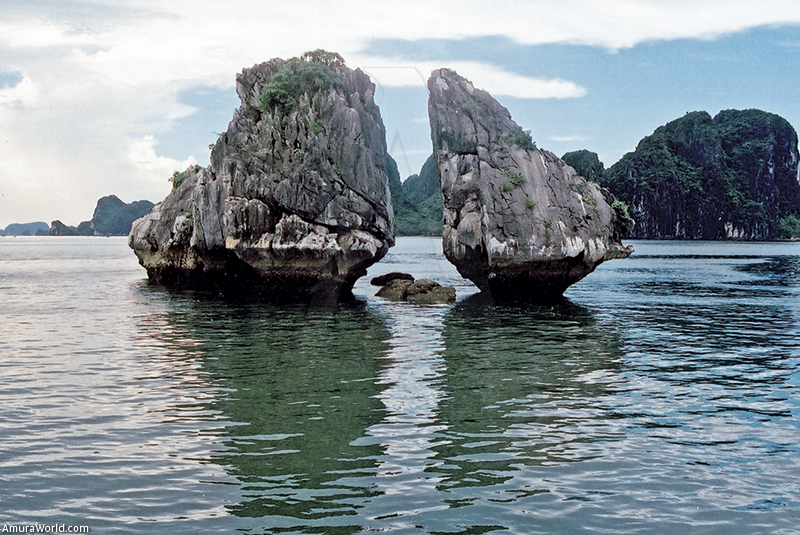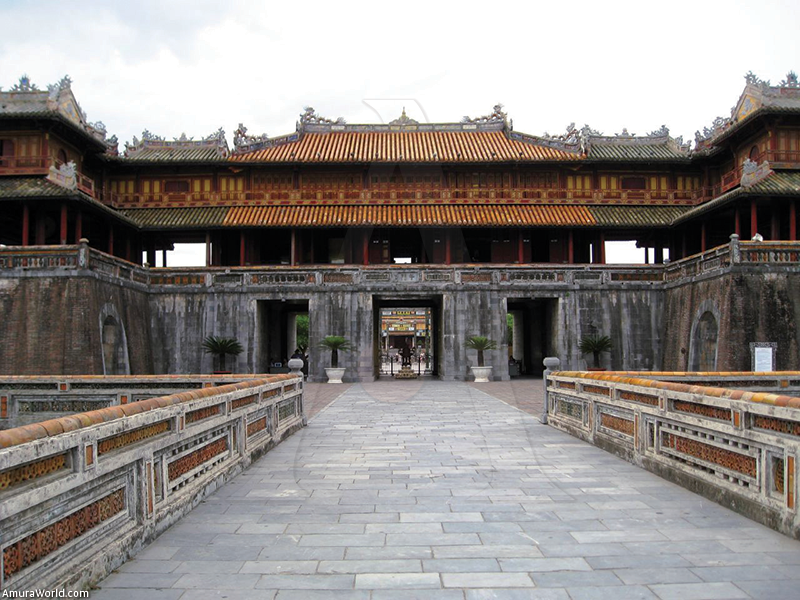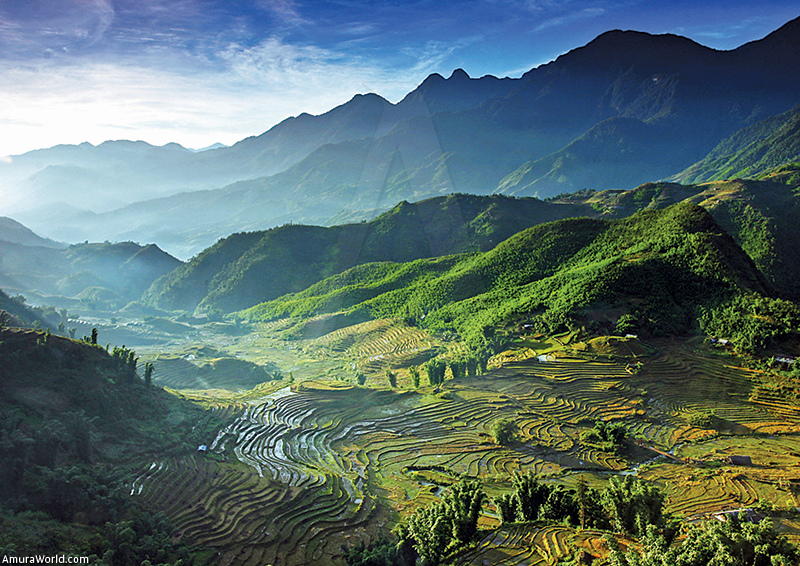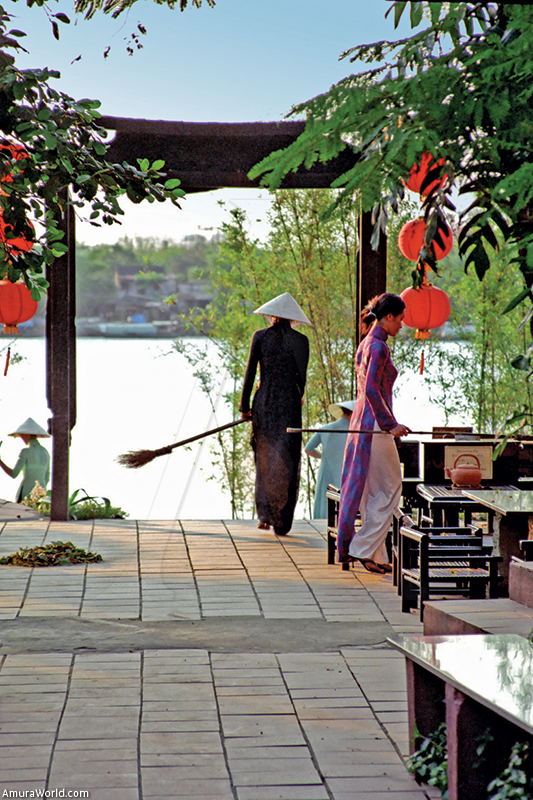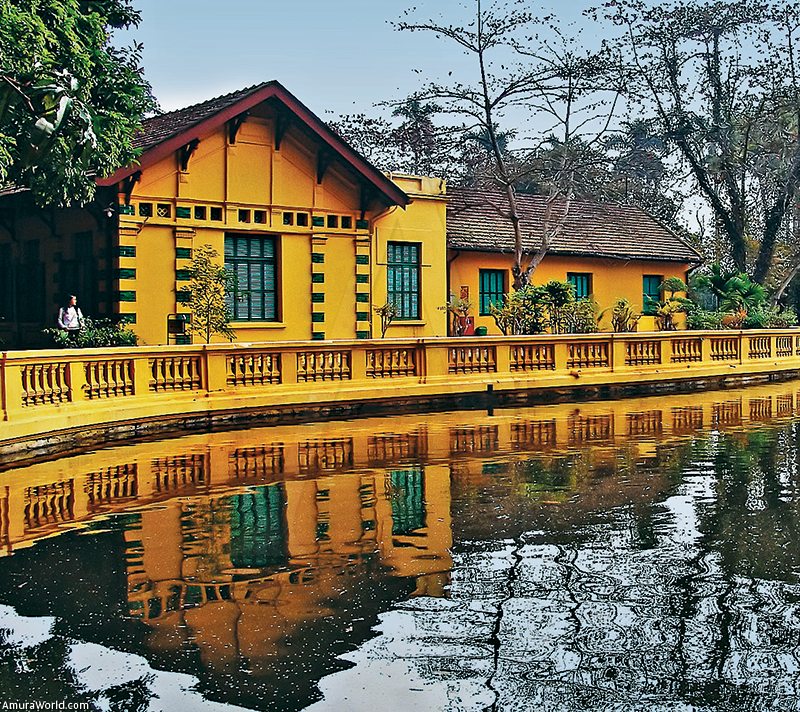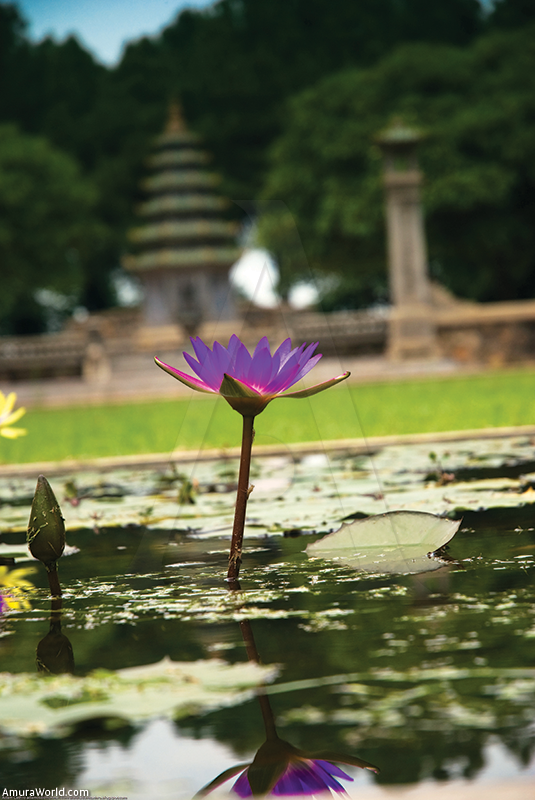Most of the people who visit this country are captured by its exuberant natural beauty, which makes itself obvious through beautiful rivers, bright rice fields and a great number of beaches. The variety in the landscape is one of its most attractive characteristics. It is possible to find different mountains, forests, rivers and lakes, but always with an incessant landscape in live green shades. Vietnam also offers the opportunity to visit a country with strong traditions that shows itself willing to open its arms to the exterior after many years of hermetecism.
History
The Vietnamese nation brews for many years from fights against invading foreign powers. Its main rival has been China, although France, Japan and the United States have also provoked great conflicts.
Since the Ist century and up to the VIth century, the south of the actual Vietnam was part of the Hindu Fun an empire. The Champa Empire appeared approximately in the actual Da Nang at the end of the IInd century, and it extended towards the south of the actual Nha Trang. The Chinese conquered the Red River’s delta in the IInd century, and kept their domain for a period of thousand years. During this period, the Vietnamese resistances did not give up in their attempt to get rid of the Chinese rule, although, at the same time, this long period was also decisive in the formation of a Vietnamese culture of their own that assimilated the knowledge of the invading culture.
In the IXth century the Vietnamese defeated the forces of the Chinese Han Dynasty, putting an end to a millennium of vassalage. In the XIIth century they rejected the Mongolians of Genghis Khan and their grandson Kublai Khan – whose name was an inspiration for Samuel Taylor Coleridge in his homonym poem - , and repelled the Chinese of the Ming and Ching dynasties in the XVth and XVIIth centuries.
After all those conflicts, the hero countryman, Nguyen Hue, was able to displace the feudal lords, defeated the army of the Qing’s and reunify the country in the XVIIIth century.
About the middle of the XIXth century, the French forces invaded the country and in 1884 a French protectorate was established over all the Vietnamese territory.
Since then, the working class resistance movements bursted everywhere; however, all of them failed. Until Nguyen Ai Quoc, who was later on known as the president Ho Chi Minh, founded the Communist Party in 1930. Under his leadership, Vietnam recon quested its independency, constituted the 2 of September of 1945 as the Democratic Republic of Vietnam.
The conflicts, however, were far of reaching an end, since, a few years later; the country was involved in another war, this time against the United States and the military governments of Saigon. During the 15 years of this devastating war there were launched more tons of bombs over Vietnam than all the bombs thrown in the Second World War, and experienced with chemical and bacteriological weapons.
Today, Vietnam’s economy experiments a growth over the 8% and the tourism is a significant source of the economical peak. Each time there is more touristic infrastructure and the tendencies of great luxury tourism have started to establish very quickly in this country.
Along with the independency struggles, something that has always characterized the Vietnamese people is their imagination expressed through several legends. Since a thousand years ago, the Vietnamese people have passed on from generation on generation the legend of their origin.
The legend tells that a character named Lac Long Quan, who possessed a superhuman strength, was the son of a dragon. Thanks to numerous victories against aquatic monsters, Lac Long married a fairy named Au Co. From this union a bag with a hundred eggs was born, which turned, a little time later, in a hundred kids. Fifty of them went with their father in the sea, while the other fifty remained in the mountainous regions with their mother. The oldest self-proclaimed King and adopted the name of Hung Vong. This first monarch gave the name of Van Lang to the nation that today we know as Vietnam.
Hanoi
The capital of the Socialist Republic of Vietnam is a small and elegant city that offers numerous historic and spiritual points of interest. It is also the most European city of all Vietnam. Its architecture reminds the provincial French ambience with the elegance of its colonial buildings perfectly preserved.
Today’s Hanoi is turning very fast in a very attractive city for the tourism with a significant cultural scene, contemporary art movements, restaurants and grand luxury hotels. Hanoi is also a landscape full of lakes, shady boulevards and lush parks.
Main Attractions
• Mausoleum Ho Chi Minh
Although it is not precisely beautiful, this monument represents a national emblem. The mausoleum houses the embalmed body of Ho Chi Minh, to whom they pay homage suitable of an emperor. Soviet style and with a facade covered with marble, it is a place of pilgrimage and cult for many Vietnamese. It is located in the Bah Din square, place in which Ho Chi Minh declared officially the country’s Independence in 1945.
• Pagoda of a pillar
Originally this pagoda was built by the emperor Ly Thai Tong orders, who governed between the years 1028 and 1054, for which is one of the few monuments prior to the foundation of the first independent Vietnamese empire in the XIth century. Its design tries to emulate the shape of a lotus bud. The emperor built it to commemorate the dream in which the goddess of mercy granted his first born son and heir. Nowadays, the couples that cannot have children go to this place to ask that their wish come true. The actual construction is not the original one because it has been destroyed several times.
• Temple of the literature
Raised in honor to Confucius in the year 1070, has been for centuries, the place where the mandarins educated their children. In 1076 the first university was founded here. The construction has five patios divided by walls and the main passage between them was dedicated to the king. It is located to the west of the Lake Hoan Kiem.
• Lake Hoan Kiem
The turtle is a sacred symbol of this lake, located aside of the Old Quarter. In the middle of the lake there is a small pagoda in honor to the golden turtle. According to an old legend, a turtle was the guardian of the magic sword that the emperor Le Loi used in the XVth century to expel the Chinese.
• Lake Thien Qu?ng
This small lake congregates a lot of people of the city. In its streets and squares you may watch some house wives following the instructions of the masters of Tai Chi, children playing and people out for walks.
• Pagoda of the Perfume
Located 60 km from Hanoi, it is about a complex of pagodas and Buddhists altars built in the mountain. The way to arrive to this place is after a trip in a small boat. The Pagoda of the Perfume is the principal worship place for the Vietnamese Buddhists.
• The Ha Long Bay
A very special destination in Vietnam is the beautiful Bay of Ha Long. The unique beauty of this bay has achieved that it is considered a Cultural Heritage for the Humanity by the UNESCO since 1994. Located in the province of Qu?ng Nin, 180 km to the east of Hanoi, the bay counts with natural formations that fills with astonishment to everybody that visits them. It is about thousands of calcareous stones along with islands of different sizes and shapes, distributed all along the bay.
A scenery as special as this one has given origin to several legends that try to explain the purpose of such a beautiful an intricate place. The local legend tells that long time ago, when the Vietnamese fought against the Chinese invaders, he gods sent a family of dragons to help them defend their territory. Seeing the Vietnamese in this fight, the dragons started to a expel jewels and pieces of jade through their mouths. These jewels turned into the islands and the pieces of calcareous stone that cover the bay, forming a natural wall which helped them to repel the invaders. This is how the people were able to safeguard their land and they formed what later on would turn into Vietnam. Afterwards, during these peaceful and prosperous times, the family of dragons decided to travel across the land in a trip, after which, they thought about establishing in the bay area.
The best way to enjoy the peerless landscapes of the bay is a traditional cruise ship. It is advisable to spend at least one night in one of this cruise ships to enjoy the daybreak in the bay, a natural sight that will make you understand the reason why this place is considered unique in the world. The traditional cruises are designed within the classic style of the XIVth century, with colorful candles and wooden structures, and it is possible enjoy an excellent service in many of them. From a massage to a sumptuous meal, the luxury cruises in the bay contribute with a touch of luxury to an exceptional trip.
• Sapa
Sapa is a city placed in the mountains, located at an altitude of 1,650 meters in the remote plains of the northeast, near the border with China. It is located 380 km from Hanoi. The best way to arrive to this place is taking the luxury train Victoria Express from Hanoi. The trip lasts ten hours and you can be sure that you will wish that it takes longer since during the trip you can enjoy innumerable rice fields with corrugates shapes and lively colors. In addition, the service on board of the train is extremely luxurious, with great attention to every detail. The train takes you directly to the Victoria Sapa Resort, the only hotel chalet style of grand luxury in this remote region.
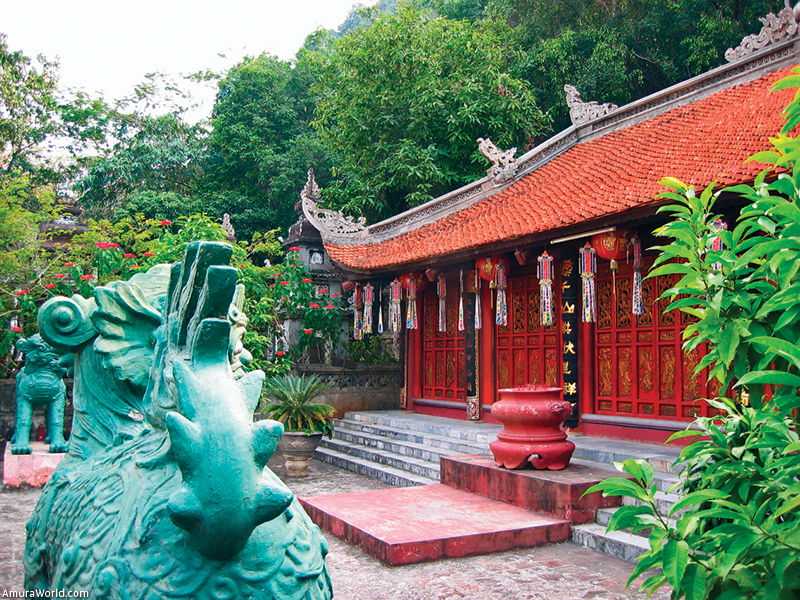 Ampliar Enlarge
Ampliar Enlarge
Among the main attractions of this area are the visits to the tribes that live in the mountains, specially the Muongs, Daos and Kinhs. It is a real privilege to be able to observe the culture, customs and handicrafts of this people, who preserve intact a great part of their traditions.
• Hue
Many people say that Hue is the most beautiful city in Vietnam. Certainly it is about a city not just beautiful but also full of history. It was the capital of the country from 1802 to 1945 and it has protruded for being one of the principal cultural, educative and religious centers. Among its many attractions there is the well known Perfume River (Song Huong), named like this for the aroma that the plentiful lotus flowers of this area give off. The river divides the city leaving to the right the new part and at the other side the old part of town.
The mausoleums, tombs, pagodas and historic temples in this city turn it into a very attractive destination.
• Hoi An
The ancient city of Hoi An is located in the central coast of the country. It possesses a great historic wealth and a unique character. During the XVIth and XVIIth was an important port center at the south of Vietnam. The city has a clear Chinese aspect with low roofed houses and narrow streets.
• My Son
Siege designated Cultural Heritage for the Humanity by the UNESCO; My Son houses a group of twenty ruins Cham. It was one of the most important cultural centers in the entire Asiatic southeast and the main center of the Champa culture since the IVth century to the XIIIth century. The Champa culture was a unique civilization in this region of Asia, which culture and spirituality related directly with the Hinduism religion.
One hour away from My Son, and 30 km from the international airport of Da Nang, is one of the most beautiful and exclusive beach resorts in all the country. It is the hotel Boutique Nam Hai. The complex offers a kilometer of private beach in the famous area of China Beach – better known because it was the arrival point for the American soldiers during Vietnam war-, and it only has private villas of grand luxury.
• Ho Chi Minh
The largest city of Vietnam concentrates most of the country’s culture. Dynamic and changing has all the elements of the economical rebirth of the country: restaurants, hotels, bars and luxurious clubs that blend with the hubbub of the streets. Its culture denotes the influence of the large French occupation. If you wish to get to know Vietnam’s urban soul, there is no better place than this city. Ho Chi Minh downtown is perfect for the nightlife.
Gastronomy
The Vietnamese cuisine is specially assorted; it is said that there are over 500 traditional dishes among which there are meats of all kind of animals and delicious dishes based on vegetables. The most typical food is the steamed rice served with a wide selection of vegetables, fish (very common in Vietnam), meats and aromatic sauces. The spring rolls Chinese style are very popular, as well as the soups with several ingredients. The coffee in Vietnam is excellent and it is normally very concentrated and strongly sweetened.
Weather
It is possible to visit Vietnam all year long; when there is bad weather in the north, the south of the country enjoys an agreeable weather and vice versa. The south has basically two kinds of weather: a rainy season (from May to November, with substantial rain in June and August) and the dry season (from December to April). The hottest and dampest season is from February to May. The central coast has dry weather from May to October and the weather is damper from December to February. The mountain areas are much colder and the temperatures here descend significantly during winter.
The north has two kinds of climate: cold and damp winters (from November to April) and hot summers (from May to October).
It is important to plan ahead your trip if you wish to visit it during the New Year festival Tet (end of January to the first days of February), sine it is very difficult to find accommodation in this season. It is also advisable to avoid the typhoon season (from July to October), if you plan a stay in the beach.
How to get there
The most direct way to arrive from Mexico is taking a flight with United Airlines to Los Angeles. From there is possible to fly directly to Bangkok with Thai Airways, from there are direct flights to Hanoi. It is worth to spend some time in Thailand and then fly with Vietnam Airlines to Hanoi; or, stay some days in Cambodia, Laos or Myanmar, after a visit to Vietnam.
Documentation
All nationalities need visa to visit Vietnam. It is possible to process a visa in Mexico if you accomplish the following requirements: valid Passport for at least six months from the date you start your trip, trip itinerary and visa application.
Info
Margarita Liceaga
Servicios Especiales de Leisure
BCD Travel
Tel: (55) 9138 3023
conmutador: (55) 9138 3000
This email address is being protected from spambots. You need JavaScript enabled to view it.
This email address is being protected from spambots. You need JavaScript enabled to view it.
Text: Kundalini Muñoz ± Photo: Getty Image, Flickr.com, Vince García, Vietnamtourism-info.com

